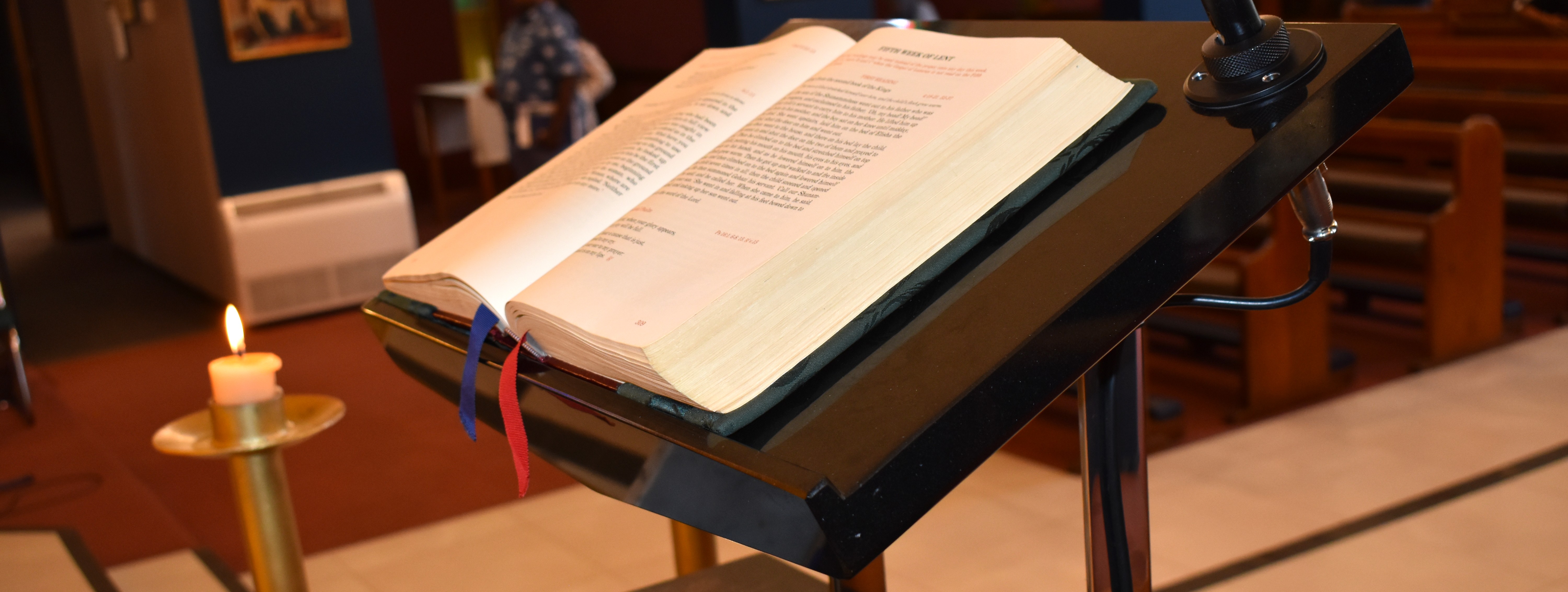The Bible in Catholic Liturgy
National Liturgical Council

The first Bibles were, of course, handwritten in Hebrew and in Greek. The allocation of particular sections of the scriptures to particular liturgical days began in the 4th century. Initially the beginning and end of each passage, or pericope, was marked in the margins of the church Bible. Later they were collected into Lectionaries for the lectors – those who proclaimed the scriptures at a liturgy.
When the Church first started using Latin in the liturgy in the fourth century because it was the language of the people, St Jerome translated the Bible from Hebrew and Greek into Latin. This translation was called the “Vulgate”, meaning that it used “language spoken by the people”. By the fourteenth century however only the clergy and the well-educated understood the Latin of the liturgy. Nevertheless, translating the Bible into vernacular languages was forbidden and John Huss was burned at the stake in 1415 for daring to do so!
During Martin Luther’s imprisonment from 1521 for “protesting” against the Catholic Church, he translated the New Testament into German. The recent invention of the printing press meant that his translation was quickly and widely disseminated. While parts of the Bible were translated into English soon afterwards, the first complete printed Bible in English, the King James Version, did not appear until 1611. At the Council of Trent (1545 – 1563) the Catholic Church reaffirmed St Jerome’s Latin Vulgate, by then well over 1000 years old, as the authentic version of scripture.
Four hundred years later the Second Vatican Council was held. The first document issued by the Council, the Constitution on the Sacred Liturgy, emphasised that “Sacred Scripture is of the greatest importance in the celebration of the liturgy”, called on Church leaders to promote a warm and living love of Scripture, and encouraged Catholics to read the Bible. The Council called for “suitable and correct translations in various languages” to be made of the Bible. In response, the Lectionary (the book containing the extracts from the Bible read at public worship) published soon after Vatican II provided a much greater range of readings from scripture for Sunday and weekday Masses than had been the case before the Council.
The first step in the process of selecting the passages for each Sundays was to allocate the Gospel reading for the day. The Sunday Gospel readings are consecutive passages taken from the gospel for that year in a three-year cycle called A, B and C. The Gospel of Matthew is read in Year A, Mark in Year B and Luke in Year C. The Gospel of John does not have its own year but is read in every year on some Sundays of Lent, on Holy Thursday and Good Friday and during Easter.
The first reading for each Sunday is almost always taken from the Hebrew Scriptures (Old Testament) and is chosen because it harmonises with the Gospel. In the Easter Season the first reading is from the Book of Acts which records the progress of the early Church, its witness and its growth.
The second reading comes from one of the New Testament letters (epistles), most often from Paul but also from Peter, John and James. It normally has no thematic relationship to either the first reading or the Gospel. The same epistle is read in a semi-continuous way over a number of Sundays.
Our present Lectionary was issued in 1969 and uses the Jerusalem Bible translation of the scriptures. It provides for a three-year cycle of three readings for Sunday Masses and a two-year cycle of two readings for weekday Masses.
The Lectionary comes in three volumes. Lectionary I has the readings for the Sundays and weekdays of Advent, Christmas, Lent and Easter and for Sundays in Ordinary Time. Lectionary II contains the readings for weekdays in Ordinary Time and for the Proper of the Saints and Commons. Lectionary III has the readings for the celebration of the Sacraments, for Masses for Various Needs and Occasions and for Votive Masses.
The Lectionary for Mass: Introduction (which is to be found in the front of Lectionary I) says this about the Lectionary:
The books containing the readings of the word of God remind the hearers of the presence of God speaking to his people. Since they serve as signs and symbols of the sacred, care must be taken to ensure that they truly are worthy and beautiful (35).
Because of the dignity of the word of God, the books of readings used in the celebration are not to be replaced by other pastoral aids such as leaflets printed for the preparation of the readings or for personal meditation (37).
The presence of Christ in the proclamation of the scriptures is emphasised when the lectionaries we use are aesthetically pleasing and the texts are proclaimed with conviction and skill.
